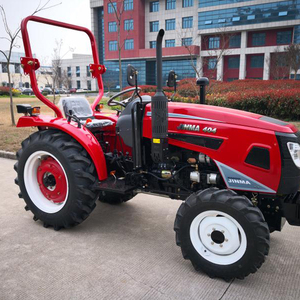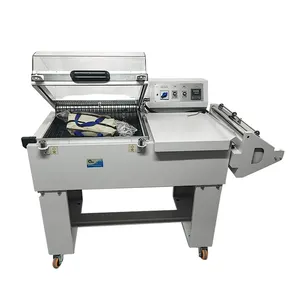Popular in your industry








































































Related Searches:















































































































































Top categories
About forestry mulcher for tractor
Embarking on a landscaping project can be a daunting task, especially when faced with overgrown or wooded areas. The key to transforming these challenging spaces into well-maintained landscapes lies in the efficiency and effectiveness of your equipment. Enter the forestry mulcher for tractors – a game-changing attachment that promises to revolutionize land management. This ultimate guide will delve into the world of forestry mulchers, exploring their design, types, and applications to help you maximize your landscaping efficiency. From robust models to the diverse offerings on Alibaba, we'll navigate the features and considerations that make these tools indispensable for anyone serious about landscaping.
Understanding Forestry Mulchers for Tractors

Forestry mulchers for tractors are specialized attachments designed for land management and brush clearing. These models, engineered for 3-point hitch tractors, are optimized for low ground speed operations. They utilize high-speed teeth for cutting through heavy vegetation and light brush. The efficiency of these mulchers is enhanced by their ability to rotate teeth, ensuring a sharp edge is always in contact with the material, facilitating easier mulching.
The design of forestry mulchers includes an integrated brush bar, which aids in managing and bending taller brush for more effective mulching. Additionally, features such as integrated skid shoes allow the mulcher to glide over the ground, ensuring consistent mulching action. The cutting action is aggressive due to the concave shaped carbide tips of the high-speed teeth, which chip away at the brush incrementally. These teeth are designed to be rotated to present a fresh cutting edge, effectively tripling the lifespan of each tooth.
For enhanced durability and performance, these mulchers are equipped with heavy-duty tooth holders that resist bending, a spiral tooth pattern for smoother operation, and a slip clutch to protect the drive system. The gearbox is built for durability, and the power is transferred via a reinforced belt, which also absorbs shocks from mulching. Additional features like a wire protection kit and a powder-coated finish contribute to the longevity and effectiveness of the mulcher in various forestry applications.
Types of Forestry Mulchers on Alibaba

Alibaba showcases a diverse range of forestry mulchers designed for attachment to tractors, providing a solution for efficient land clearing and management. The selection includes heavy-duty mulchers capable of handling the rigors of forestry work. Tractor mulchers come in various types, such as drum mulchers, which are robust and suitable for thick vegetation, and flail mowers, which are ideal for cutting overgrowth and maintaining land. For those needing to reach difficult terrains, the hydraulic forestry mulchers offer enhanced maneuverability. Each type is built with durability in mind, featuring components like sturdy frames and powerful motors to withstand the demands of forestry tasks.
The forestry mulchers on the platform are equipped with features that cater to different land management needs. Some are designed for heavy-duty tasks, capable of shredding trees up to 8 inches in diameter, while others are more suited for lighter work, such as clearing underbrush and smaller trees. The mulching heads are engineered for efficiency, turning trees and brush into mulch that can be recycled back into the environment. The versatility of these attachments is evident as they can be used on various terrains, enhancing their utility for a wide range of landscaping projects.
Key Features to Consider When Choosing a Forestry Mulcher
When selecting a forestry mulcher for a tractor, it's crucial to consider the type of mulcher and its compatibility with the tractor's power. Mounted mulchers require a tractor with sufficient horsepower (HP) to handle the shredding diameter. For instance, to cut material less than 120 cm wide, a tractor with 18 to 40 HP is needed, while for widths over 170 cm, a tractor should have between 35 HP and 65 HP.
The grinding technology is another key feature to consider. Mulchers come with various grinding technologies such as flail, knife, disc, drum, wire, and sickle bar. Each technology has its unique advantages, and the choice may depend on the specific requirements of the forestry work to be undertaken.
Additionally, the weight of the mulcher is an important consideration. The traction equipment, whether it's a tractor, mini-excavator, or backhoe loader, must be able to handle the weight of the mulcher to ensure stability during operation. Understanding these key features will help in choosing a forestry mulcher that is efficient and suitable for the intended landscaping tasks.
Applications of Forestry Mulchers in Landscaping
Forestry mulchers for tractors are versatile tools in land management, capable of transforming overgrown areas into well-maintained landscapes. These mulchers handle underbrush and invasive species, promoting the growth of desirable grasses and plants. By removing unwanted vegetation, they not only clear land but also help in restoring wildlife habitats, controlling the spread of invasive species, and preserving native ecosystems. The mulched material left behind acts as a natural fertilizer, enriching the soil and encouraging healthy plant growth. This process is beneficial for creating nature trails, managing public and private lands, and aiding in conservation efforts for wetlands and riverbank habitats. Additionally, the mulching technique supports animal welfare by clearing access to water sources and fostering the growth of habitat-specific flora. Forestry mulchers are thus an eco-friendly solution for maintaining and enhancing diverse landscapes.
Material and Build Quality of Forestry Mulchers
The forestry mulcher, a pivotal machine in land-clearing operations, is engineered with a rotating drum outfitted with steel teeth or blades, which are replaceable to ensure longevity and performance. These cutting components often feature carbide tips, which are welded on to provide enhanced durability against the rigors of grinding down vegetation. The versatility of forestry mulchers is evident in the variety of types available, including standalone units and attachments that can be mounted on other machinery such as excavators, tractors, or skid steers. This adaptability makes them suitable for a range of forestry mulching tasks.
Advantages of Using Forestry Mulchers for Efficient Landscaping

Forestry mulchers offer a versatile and efficient solution for land management, capable of clearing large areas swiftly, making them suitable for a range of vegetation removal tasks. Their design allows for navigation in smaller spaces and selective clearing, which is beneficial for precision landscaping work. The mulching process is integral to land-clearing as it helps prevent soil erosion by creating a protective mulch layer. This layer not only safeguards the soil but also promotes healthier growth by protecting root systems from exposure.
The benefits of using forestry mulchers extend to soil quality improvement. By breaking down organic material, these machines contribute to the creation of nutrient-rich mulch, which enhances the regeneration of the land and encourages robust plant life. Additionally, the mulching process can aid in adjusting soil pH levels, fostering a more plant-friendly environment, and can also disrupt mold growth, which helps protect against fungal diseases. The efficiency of forestry mulchers is evident in their ability to clear an average of one acre per day, providing fast results and a streamlined approach to land management.
Maintenance Tips for Forestry Mulchers
Maintaining your forestry mulcher is crucial to prevent it from becoming a drain on your resources. Regular preventive maintenance is segmented into five key areas: the carrier, drive, hydraulics, lubrication, and cutter teeth. It's essential to adapt your maintenance schedule to the working conditions, with more frequent cleaning of air and fuel filters in dusty environments and immediate attention to any unusual noises or vibrations.
For the carrier, a daily inspection is recommended to check for leaks and worn hoses, ensuring that quick-disconnects are clean to avoid damage to high-efficiency motors. The drive system, often using belts, requires tension checks every 40 hours to prevent premature failure. A simple deflection test can determine the correct tension as per the manufacturer's guidelines.
Hydraulic systems demand prompt attention to leaks to avoid temperature spikes that can lead to shutdowns. Regular checks of oil coolers and their vents are necessary to maintain optimal temperatures. Lubrication should follow the manufacturer's recommendations, as both over-greasing and under-greasing can reduce bearing life. For example, some bearings may need daily greasing, but more is not better.
Cutter teeth are the workhorses of the mulcher and should be inspected regularly for wear or damage, with replacements made as needed. Using the correct gauge for sharpening ensures the longevity of the teeth. Balancing the rotor is also critical to prevent undue wear and vibration. Integrating these maintenance checks into a daily routine can significantly reduce downtime and repair costs.
How to Maximize Efficiency with Your Forestry Mulcher
To maximize the efficiency of your forestry mulcher, it's essential to maintain the performance of the mulching tools. Daily inspections are crucial; for carbide-tipped teeth, replace them as they wear down to prevent damage to the toolholder and rotor. For hardened steel blades, maintain their sharpness through frequent sharpening, and if reversible, alternate cutting edges to extend their life. Avoid mixing old and new tools, as this can cause rotor imbalance and reduce mulching efficiency. Keeping a set of worn tools similar in shape and weight to your current ones can minimize downtime when replacements are necessary. Adhering to these maintenance tips can significantly enhance the longevity and effectiveness of your forestry mulcher.
Conclusion
In conclusion, forestry mulchers for tractors are indispensable tools for efficient land management, offering a powerful solution for transforming overgrown terrains into pristine landscapes. These machines provide a range of options to suit various landscaping needs, from heavy-duty clearing to precision mulching. Key considerations such as tractor compatibility, grinding technology, and mulcher weight guide users to make informed decisions. The environmental benefits of mulching, including soil enrichment and ecosystem preservation, underscore the ecological significance of these machines. Regular maintenance and proper use are critical to maximizing the efficiency and lifespan of your mulcher. By understanding and applying the insights from this guide, landscaping professionals and enthusiasts alike can enhance their efficiency and contribute to healthier, more vibrant ecosystems.







































